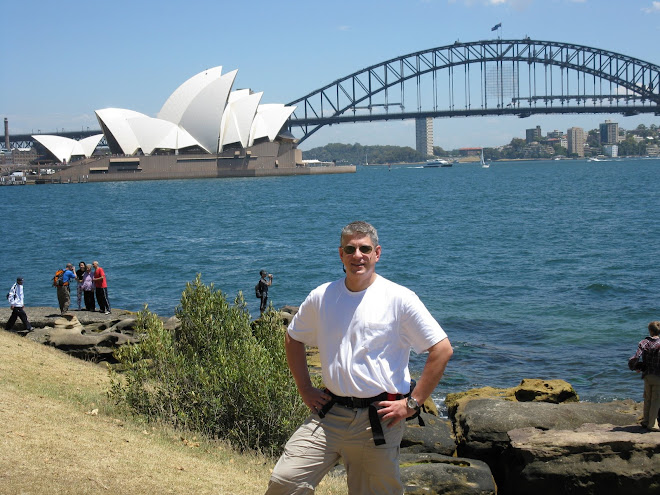
Tomorrow morning, five of us will depart from Pymble to begin a three day drive across southern Australia to Seven Hill retreat house in the wine country near Clare. We'll begin by heading south into the famous Blue Mountains, where we're planning a six mile hike to take in the scenery. Then we head on to West Wyalong, where we will spend our first night in a parish there, and continue on the second day to Mildura. In Mildura, we'll stay at the parish where I'll eventually be giving retreats, and help out the local pastors by taking five of their Saturday and Sunday masses. We will arrive, if all goes according to plans, around dinner time on Sunday at the retreat house. The other 9 will all be flying on Sunday...
Many people ask, "what do you want to get out of your thirty days of silence?" Great question... actually, it's so helpful to begin by getting in touch with our hopes and expectations as we start retreat. More than anything else, I want to follow God's lead and not get in the way of what God wants to do with me. For my friends who are not believers, I would say this means that I want to be fully present, to the extent that I am able, to reality as it is- unvarnished and unadorned, rugged, beautiful, bare, complex, and simple. I want to be open to seeing parts of myself that I tend to keep in the shadows and to allowing them to be part of the whole of me. And I want to grow in awareness of the abundance that is nature, the gift of being alive and awake. For those reading this who are Christian, or respect Jesus as a teacher of wisdom and of compassion, I want to know him, love him, and follow him to the full extent of the potential that lies within me. And I pray that I might grow in freedom from myself that I might be more available to others.
Kierkegaard, the 19th century Danish philosopher, wrote quite profoundly of this invitation to realize our full potentiality:
It is very dangerous to go into eternity with possibilities which one has
oneself prevented from becoming realities. A possibility is a hint from
God. One must follow it. In every one there is latent the highest
possibility, one must follow it. If God does not wish it then let God
prevent it, but one must not hinder oneself...
And so I pray to stay out of my own way, and ask God that my ego might take a back seat to whatever the Spirit wills. Of course, it is pretty vain to be writing such lofty intentions and publishing them to the world, isn't it... clearly, I have my work cut out for me! So please pray for me, as well as for Dan, Gilbert, Johann, Charles, Peter, Joseph, Arthur, Lawrence, Bruno, Bill, and Simon, as well as our directors, Adrian, Joe, and Peter.
This is the last blog for the next five weeks or so, but in the meanwhile, if by chance you are looking for resources for your Lenten journey and prayer life, please check out "Pray as you go," a media service developed by the British Jesuit province: http://www.jesuit.org.uk/jmi/pray-as-you-go.htm
Peace and all good things to you the rest of this Lent and Easter!















 In its early years the College offered 'Classical and Modern Languages, History, Mathematics, the Natural Sciences and all other branches required for the Civil Service, the Junior, Senior and Matriculation Examinations.' It was advertised that the curriculum included a modern side - mercantile subjects.
In its early years the College offered 'Classical and Modern Languages, History, Mathematics, the Natural Sciences and all other branches required for the Civil Service, the Junior, Senior and Matriculation Examinations.' It was advertised that the curriculum included a modern side - mercantile subjects. 







 Mark 1:12-15
Mark 1:12-15




